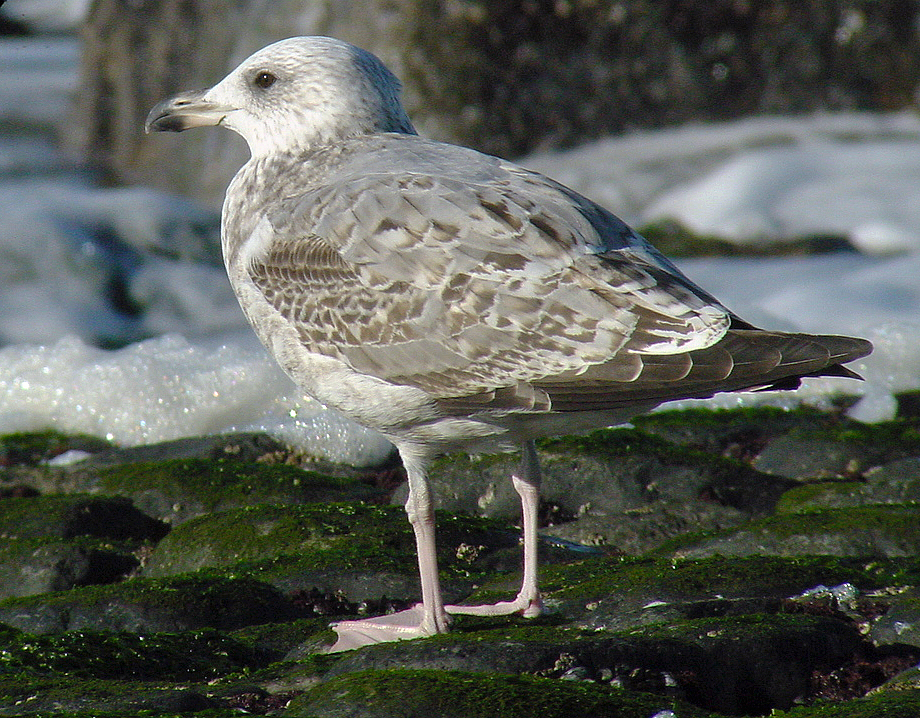 Yellow-legged
Gull - Larus michahellis
Yellow-legged
Gull - Larus michahellis
(last update: October 08 2013)
Coordinators:
Delfín González
Gabriel Martín
Antonio Gutierrez
Amir Ben Dov
Mars Muusse
Yellow-legged Gull michahellis 2CY, October 22 2001, Westkapelle, the Netherlands.

This individual shows the average moult
timing in 2CY michahellis by the end of October. After the complete
moult in summer, a partial moult was started from late August onwards.
Most obvious replacements took place in the upper tertials and inner
wing-coverts. Recently moulted
feathers show a greyish-brown base and fringe combined with ill-defined
dark brown patterns. Note the rather dense variegated barring on the outer
greater coverts and the delicate head streaking on this individual. In the
partial moult, replaced feathers include the second innermost greater
covert, most of the outer and central median coverts and a few inner lower
lesser coverts.
Most of the scapulars appear all grey, while some of these grey feathers
may show a prominent dark shaft-streak. In many 2CY michahellis,
and here as well, the upper two tertials were moulted last and lack the
typical second generation dark brown-black centre; the pattern is rather
narrow barred.
 In
this individual, note the rounded tops of the primaries, which still show
a narrow white tip. Compared to juvenile
fresh feathers, the tips of second generation feathers are
rounded, where juveniles show more pointed tips. Click the thumbnail to
view juvenile primary tips in October, also still showing a faint white
crescent on the outer primaries.
In
this individual, note the rounded tops of the primaries, which still show
a narrow white tip. Compared to juvenile
fresh feathers, the tips of second generation feathers are
rounded, where juveniles show more pointed tips. Click the thumbnail to
view juvenile primary tips in October, also still showing a faint white
crescent on the outer primaries.
In the top picture, note the front lower scapulars, elevated by the wind, showing the brown rows underneath.
